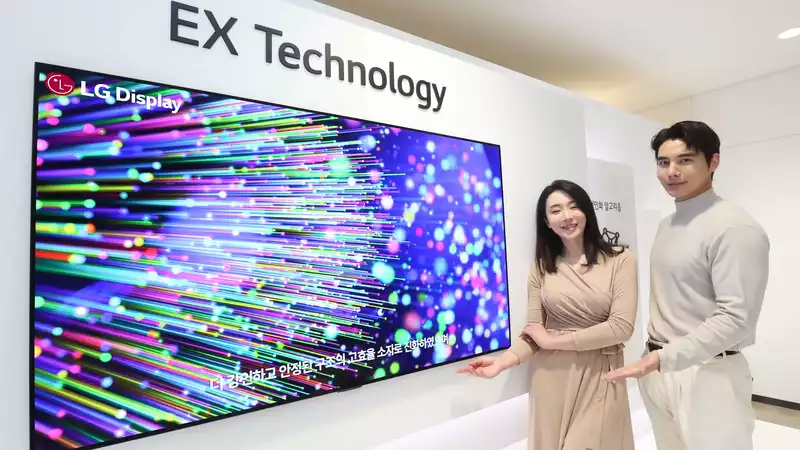LG's OLED TVs have long dominated the market with their stunning colors and deep blacks. In 2021, however, the technology finally succumbed to mini-LEDs. Mini LEDs are a new take on LED TVs, which project thousands of tiny LEDs to achieve astonishing brightness and local dimming control.
That's why we chose the Samsung QN90A Neo QLED as the best TV on the market today, explaining that 2021 is the year QLEDs finally beat out OLEDs. However, before the 2022 CES, LG Display announced its next generation OLED technology.
In a press release, LG Display announced OLED EX, a next-generation display technology that combines an isotope of hydrogen, a deuterium compound (also known as deuterium), to create a display that is 30% brighter LG has also announced that it is working to ensure the stability and efficiency of OLEDs (organic light emitting diodes) using "personalized algorithms" to ensure the stability and efficiency of the OLED.
According to an LG Display press release, "OLED EX displays unleash new levels of image precision and brightness, accurately delivering elaborate and realistic details and colors without distortion, such as sunlight reflecting off a river or the veins of individual leaves on a tree."
Of course, brighter displays raise the concern of burn-in, a minor drawback of OLED displays. Manufacturers have successfully reduced burn-in with pixel-shifting technology, but in certain use cases, still images such as logos can remain permanently on the screen as faint afterimages. However, this would have to be a very specific use, such as leaving a news channel on for hours on end for days or months at a time, or using an OLED display as a computer monitor. [LG Display has found a way to extract deuterium from water and apply it to organic light-emitting devices. The "stabilized deuterium compound allows displays to emit brighter light while maintaining high efficiency over long periods of time.
Personalized algorithms are also touted by LG Display. Based on machine learning technology, these algorithms essentially adjust the output to more accurately output color details. The bezel has also been reduced, from 6 mm to 4 mm, and is 30% thinner than its predecessor. It is not known if this new lineup of LG OLED EX TVs will support the upcoming HDMI 2.1a standard.
OLEDs remain big business for LG Display, with sales up 70% despite a 12% decline in the TV market this year, and Dr. Oh Chang-ho, Executive Vice President and General Manager of TV Business at LG Display, said, "Our OLED technology, algorithms, Through the evolution of our design, we hope to provide even more innovative and high-end customer experiences."










Comments